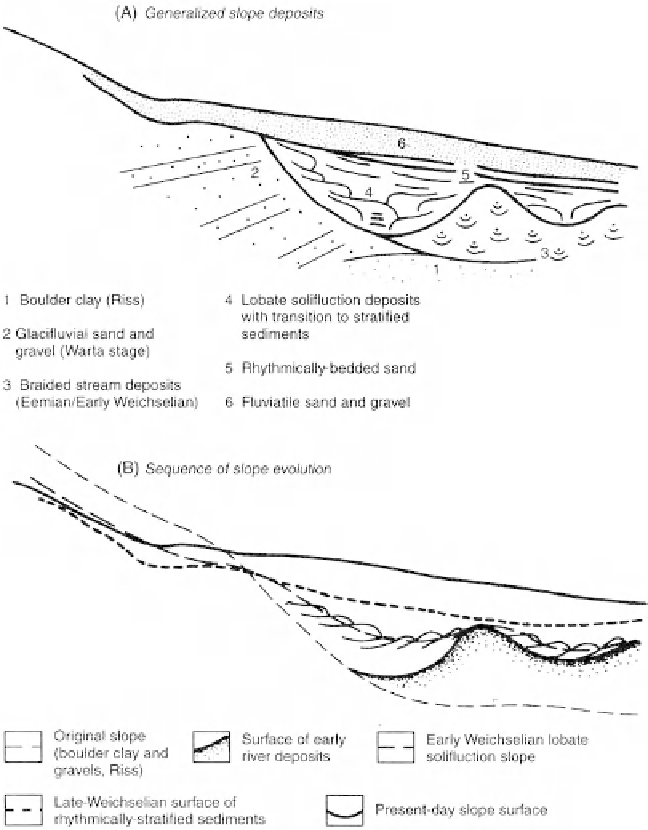Geology Reference
In-Depth Information
depression. The hill possesses smooth concave slopes, grading from 25-35° in angle in
their upper parts to 10° in their lower parts. The hill, composed of glaciofl uvial sand, silt,
and gravel which overlie till, is a glacial feature (kame) that formed during deglaciation
of the penultimate ice sheet (Warta stage, Riss glaciation) (Dylik, 1963).
The slope deposits that mantle the foot of the hill enable reconstruction of the slope
modifi cations that took place during the last (Vistulian-Weichslian) cold stage (Figure
13.13). The lowermost deposits are cross-bedded fl uvial sand, indicating the previous
existence of a stream at the foot of the slope. Overlying and obliterating the relief of these
channel deposits are 5-10 m of solifl uction debris and rhythmically-stratifi ed deposits, all
clearly derived from the glaciofl uvial sediments which comprise the hill. Lobe-like solif-
luction structures constitute the lower section of the deposits. The change to rhythmically-
Figure 13.13.
The probable sequence of periglacial slope evolution at Gora Sw Malgorzata, central
Poland. From Dylik (1963). Reproduced by permission of Łód ` Scientifi c Society.

